How to prevent pruning shears and other gardening tools from rusting – 5 expert tips
Keeping tools free from rust will extend their life and maintain optimum performance
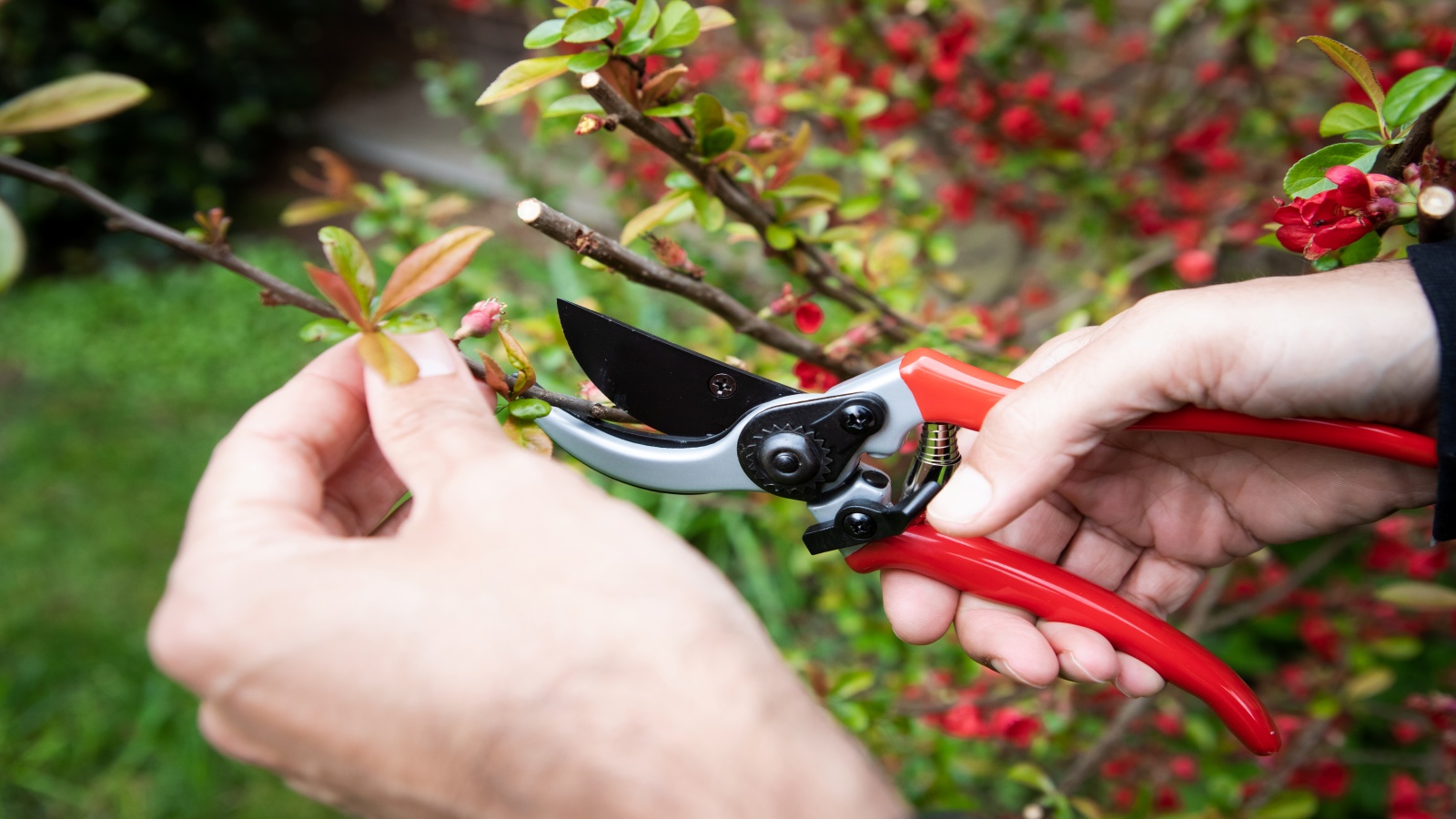

Preventing pruning shears and other garden tools from rusting is an essential fall task that helps to ensure their longevity and good performance.
Some of my most precious gardening tools were handed down from my parents (and even grandparents) and I want them to last for many more years, so I am meticulous about looking after them.
Knowing how to clean rusty tools properly before putting them away is an important part of preventing corrosion eating into the metal and moving parts, but it is easier to prevent rust in the first place. After many years as a gardener and gardening editor, here are my top tips for protecting your garden tools against those tell-tale orange marks.
1. Clean and dry tools after every use
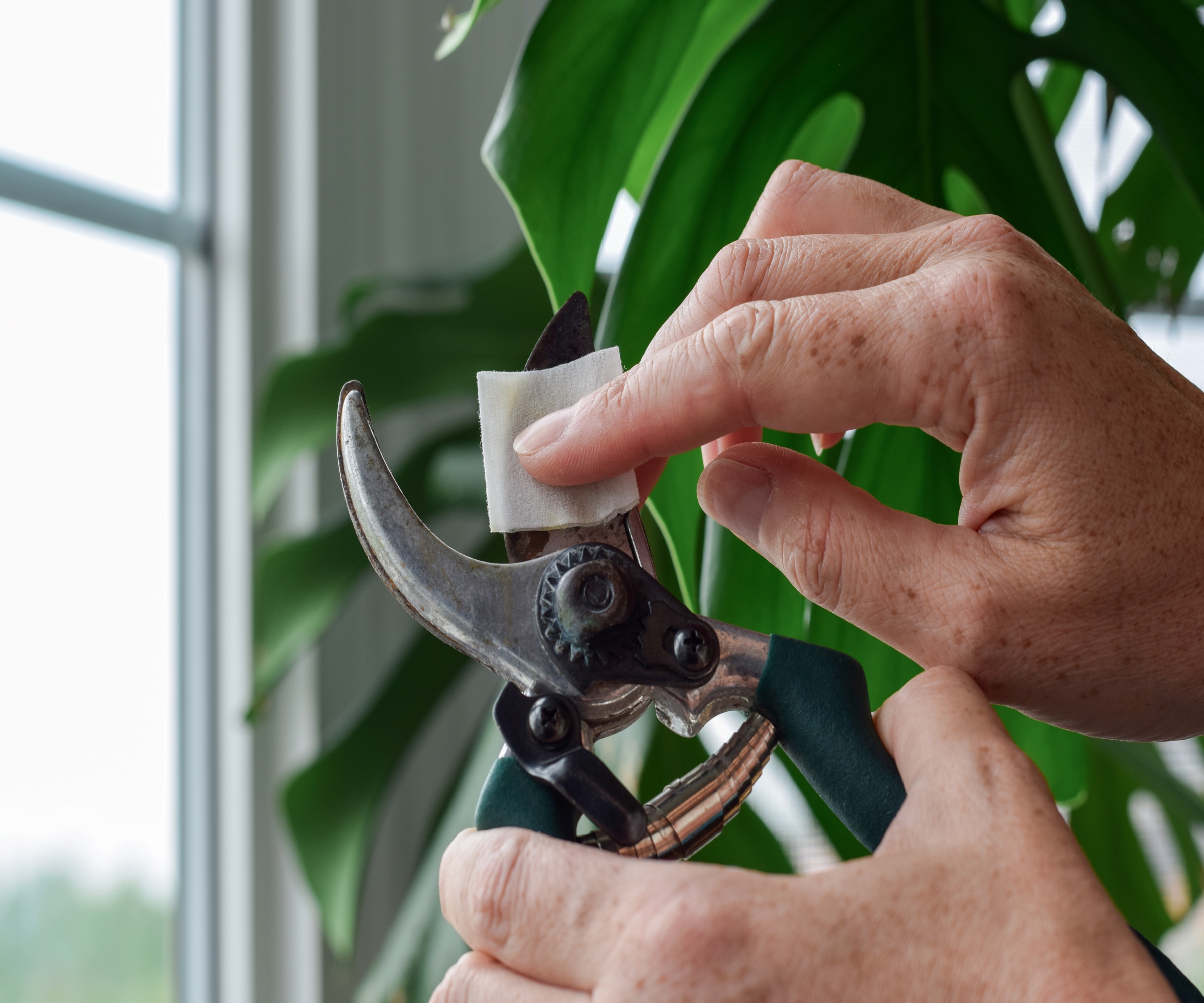
Cleaning and disinfecting tools after use will help to keep them rust-free
Always clean your garden tools, because leaving them dirty after use is one of the main ways that pests and diseases are spread around the garden.
Remove soil, debris and plant residue after each use, and make sure they are dry before storing them away.
I often leave my pruners, loppers and saws open on a dry work surface for a few hours after cleaning them, making sure they are out of the reach of children and pets, so they can properly air dry.
2. Sharpen tools after use
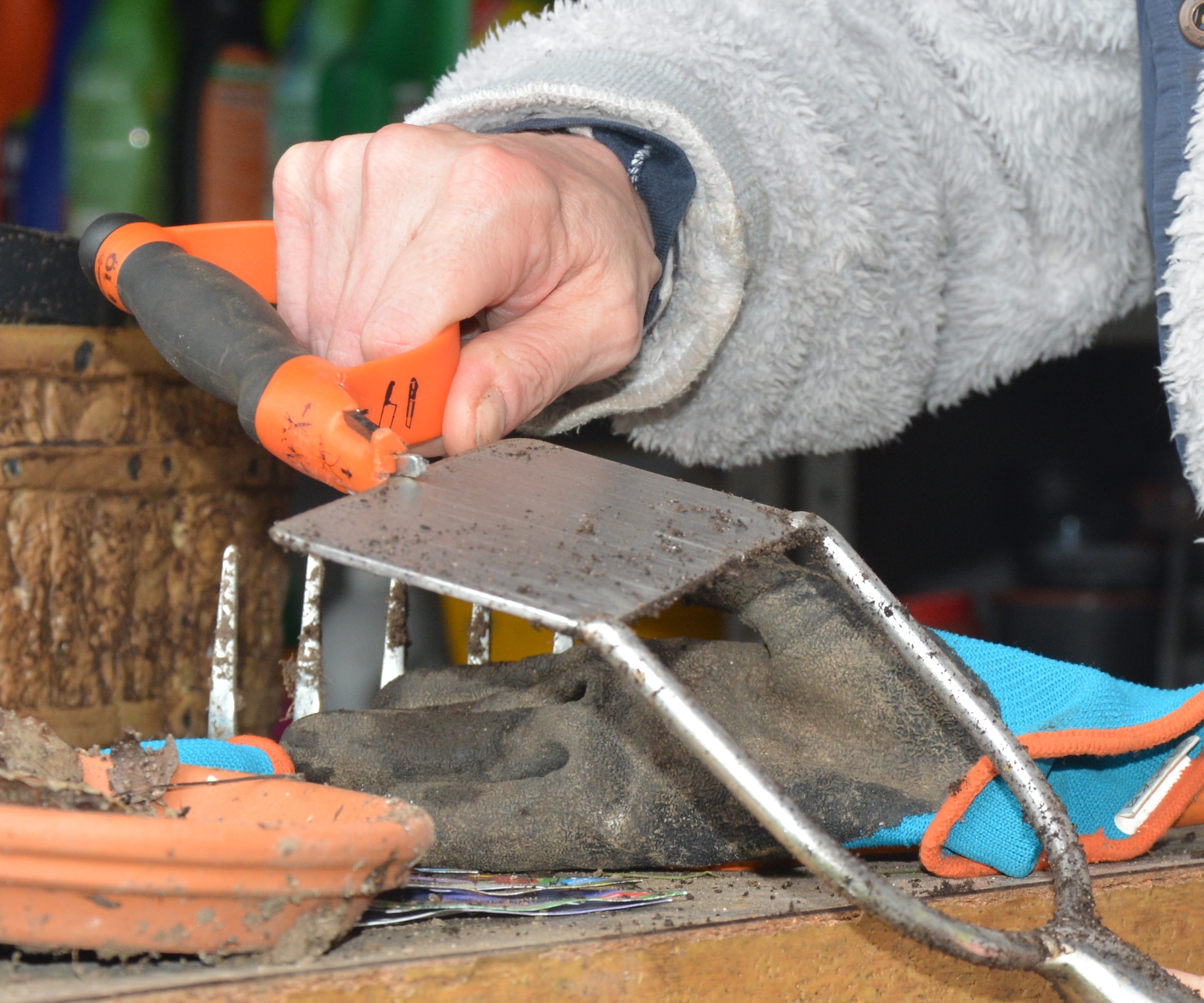
Always sharpen cutting tools and hoes after use so they work more effectively and are less likely to rust
Sharpening your pruning shears, saws and hedge trimmers regularly will also help keep them free of rust because it is less likely to form on a smooth, sharp surface.
As well as my pruning tools, I also sharpen my spade and hoe blades after every use. A sharpening stone file such as this from Amazon would be perfect for the job.
A sharp spade will slice through the soil with greater ease when digging, and will slice the most congested perennial crowns into sections when dividing plants.
A hoe with a keen edge makes it so much easier to slice off young weeds at their roots so I can leave the top growth to rot down where it falls and feed the soil.
3. Oil your tools
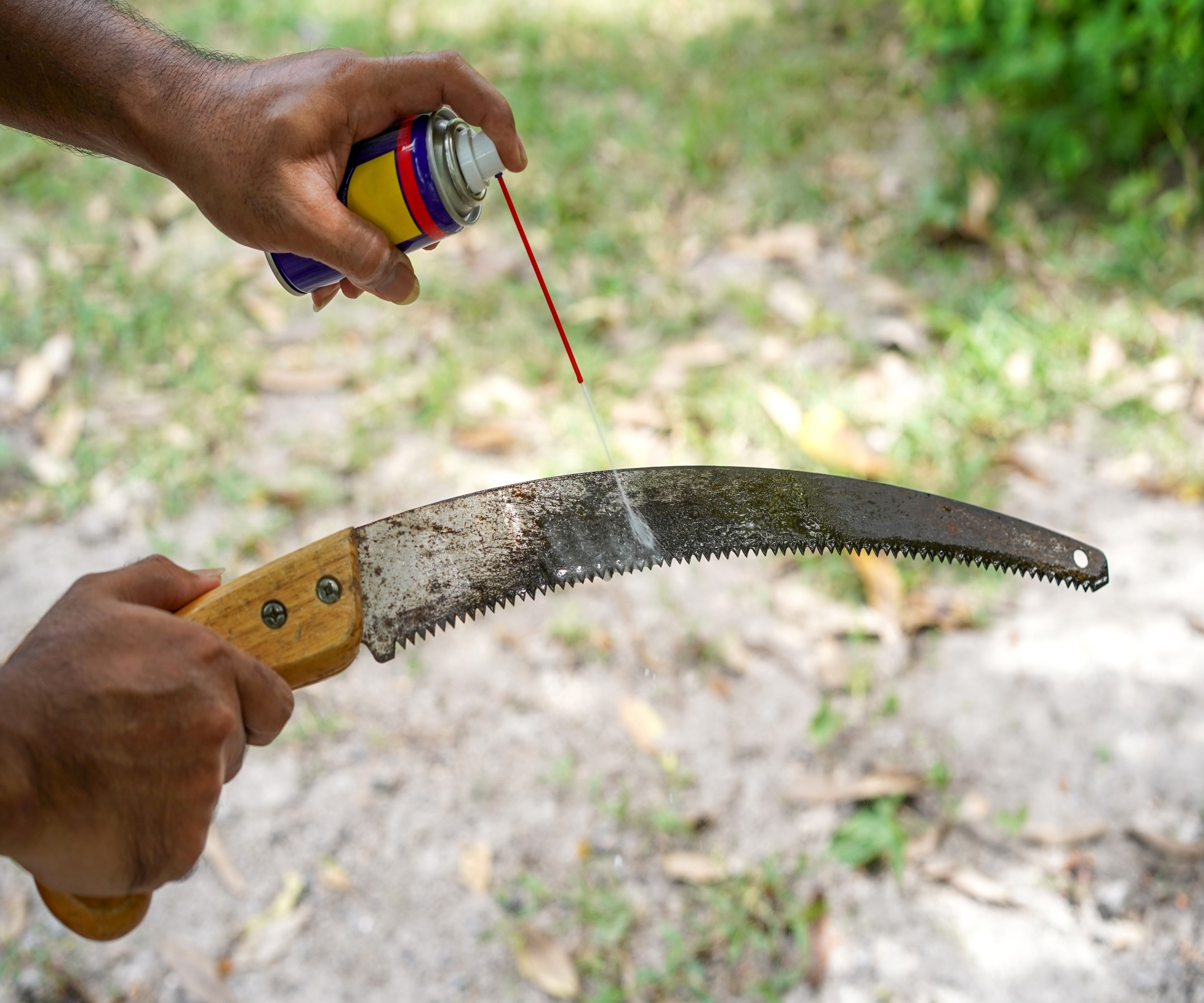
Oiling the blades and moving parts of tools after use makes them easier to use and helps keep rust at bay
Once your tools are clean, sharp and properly dry, wipe over any metal and moving parts with a soft oiled cloth and squeeze a few drops of lubricant into the hinges of cutting tools such as shears, scissors and pruners.
This creates a moisture barrier, causing liquid to run off rather than pooling in one place and encouraging rust.
Oiling also lubricates the blades so they work more smoothly and are easier to use - when you've got a lot of fall pruning to do, nothing is more frustrating than a sticky pair of secateurs.
You could use motor oil or vegetable oil, or a specific lubricant such as this three-in-one multipurpose oil available at Amazon.
4. Store your tools properly
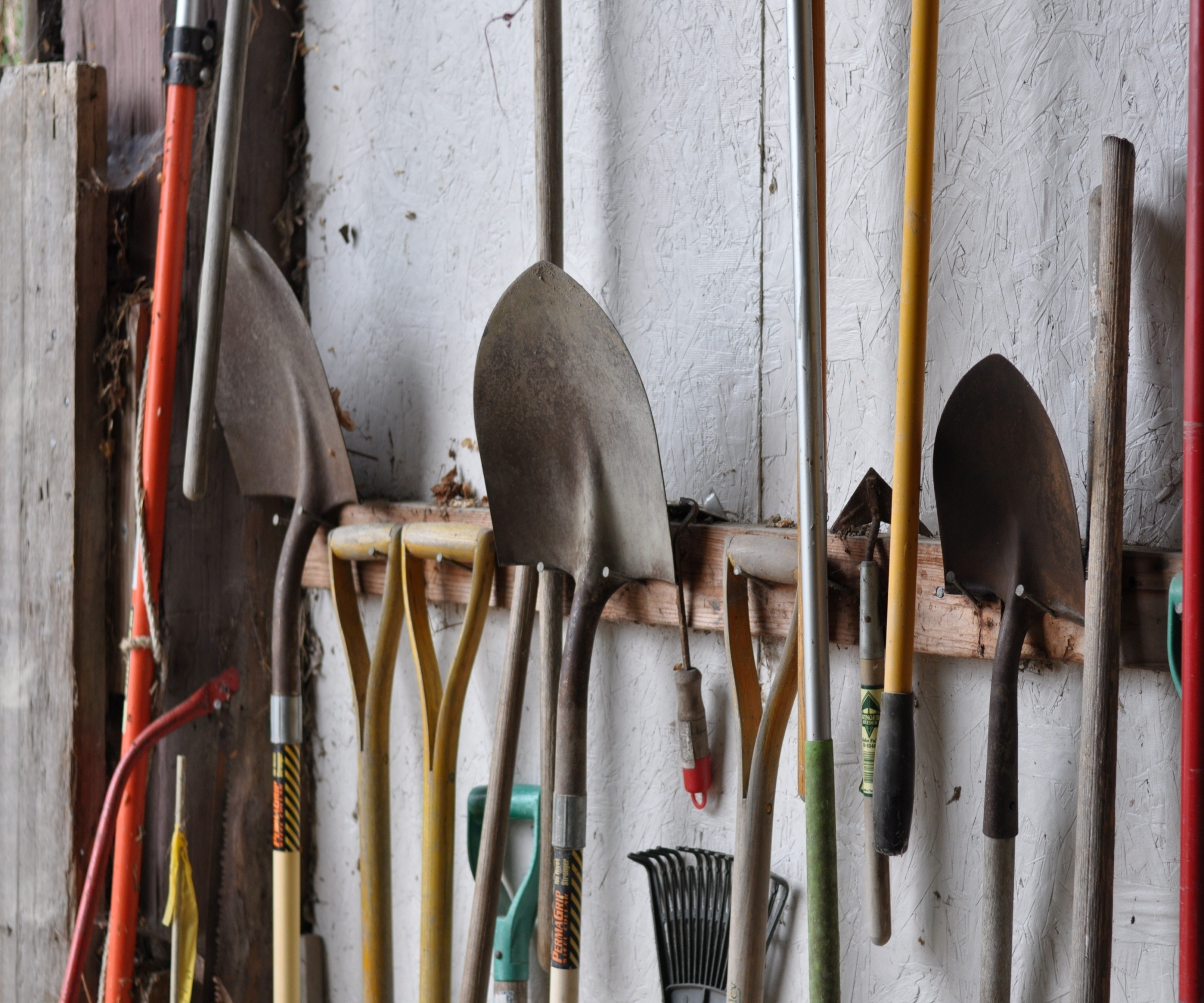
Storing clean tools properly in a light, well ventilated shed will help prevent rusting
All the cleaning, sharpening and oiling in the world will go to waste if you don’t organise your potting shed so you can store your tools properly.
Keep them somewhere dry and sheltered, in a labelled box with a lid or labelled drawers. Alternatively, hang them up somewhere dry and well ventilated where they can’t be reached by children but where good airflow will reduce the risk of damp and rusting.
An added bonus of storing your tools properly is, of course, that you’ll know exactly where to find them when you next need them.
There are some great potting shed storage ideas available at Wayfair.
5. Buy quality tools
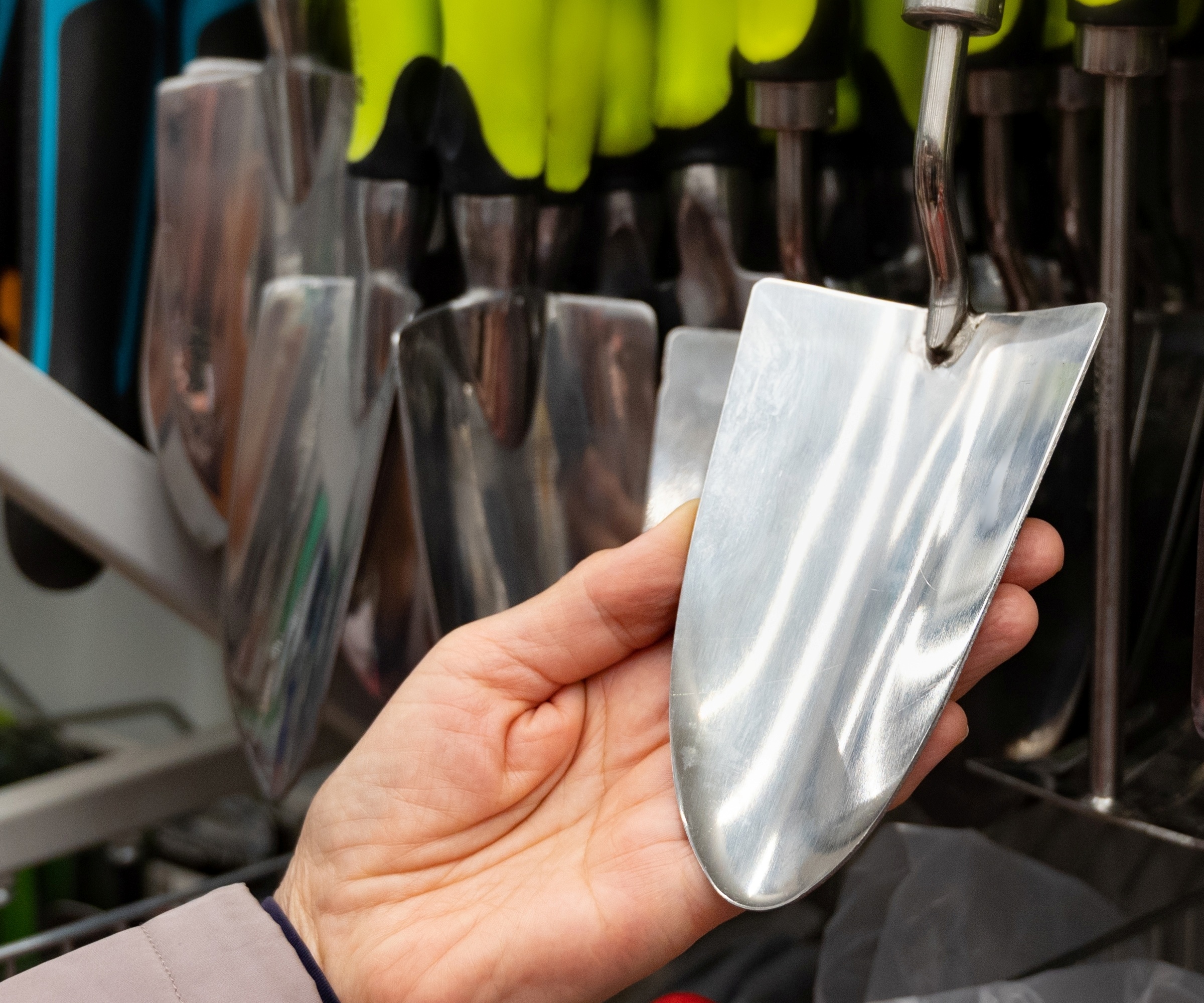
Always buy the best tools you can afford as good quality will last longer
Cheap tools are a false economy, and it is always worth spending the most you can afford and buying the best possible tools as they will be better made, more robust and therefore more able to withstand rusting through the years.
Stainless steel, hand-forged steel and carbon steel are the best materials for blades, such as this pair of Fiskars bypass pruners with rust-resistant steel blades on Amazon. They are heavier than aluminum but are less likely to buckle and will last longer.
When buying pruning tools, always try them out before buying to see how they feel in your hand, how strong the hinges are and how comfortable they are to hold and use.
When buying digging tools, I favour something lightweight like this Radius pro-lite carbon steel shovel on Amazon as I’m quite small, but I like wooden handles on my trowels and hand forks because I like the feel of it as I work. I also clean and oil wooden handles so they are less likely to crack.
FAQs
How do I protect my lawnmower blade from rust?
When you come to winterize your lawn mower after the last cut of the year, clean the grass trimmings off the blade, then sharpen and oil it.
You may also wish to take it to a local lawn mower mechanic to get it serviced before it starts work again next spring.
How do I protect digging tools from rust?
Using sand and oil is a traditional way of cleaning larger tools that are used in the soil, such as spades, shovels, forks and hoes, as well as smaller hand forks and trowels.
Fill a bucket with sand and mix in some oil - motor oil or vegetable oil works well. Once you have brushed any soil and debris from your tools, plunge them into this mixture a couple of times to remove all vestiges of dirt and coat them with a protective layer of oily sand to act as a barrier against rust.
Prevention is better than cure, and knowing how to clean your garden tools from the get-go will help protect them from rust damage and save you a lot of time and money in the long term.
Sign up to the Homes & Gardens newsletter
Design expertise in your inbox – from inspiring decorating ideas and beautiful celebrity homes to practical gardening advice and shopping round-ups.

Ruth is a Contributing Editor for Homes & Gardens, and formerly Gardening Editor of Amateur Gardening magazine. She is horticulturally trained, with a qualification from the Royal Horticultural Society. Her work for Amateur Gardening, the world's oldest weekly gardening publication, involved matching gardening tasks with each season, covering everything from sowing and planting, to pruning, taking cuttings, dealing with pests and diseases and keeping houseplants healthy. She is an expert in ornamental plants and edible crops, and everything she writes about and photographs is in her own garden, that has been a work in progress since her family moved there in 2012.
-
 These are the colors that just don't work with purple – 4 shades to sheer clear of if you want to bring this on trend color into your home
These are the colors that just don't work with purple – 4 shades to sheer clear of if you want to bring this on trend color into your homeWhy some colors sabotage purple, and how to get it right every time.
By Sophia Pouget de St Victor
-
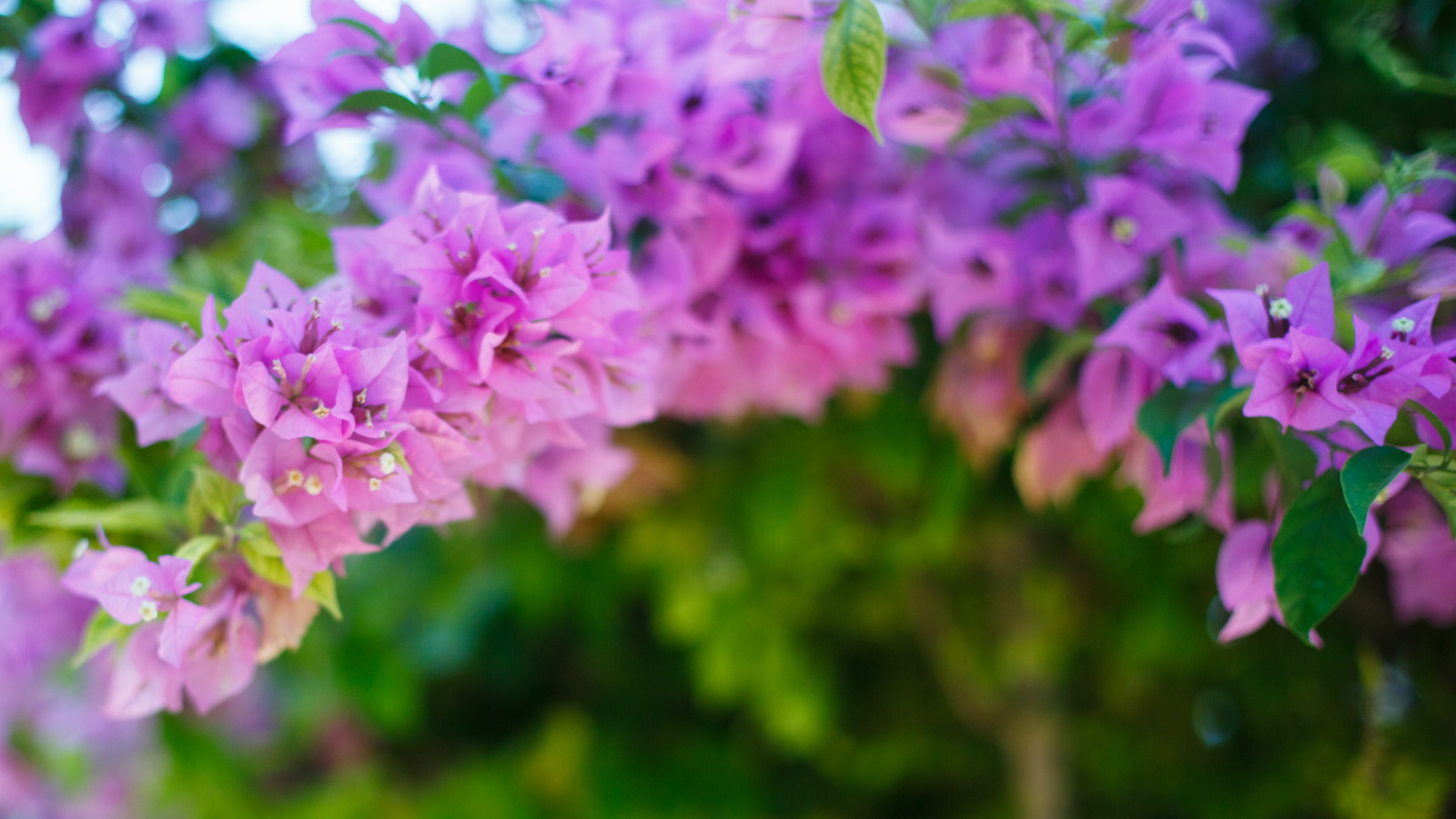 Best climbers to grow in pots – 5 easy-to-grow vines that will transform small spaces with vibrant color
Best climbers to grow in pots – 5 easy-to-grow vines that will transform small spaces with vibrant colorMake the most of small terraces, patios and balconies by filling pots with colorful climbers
By Thomas Rutter